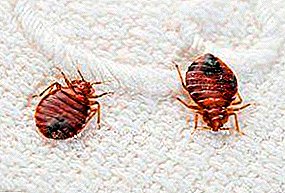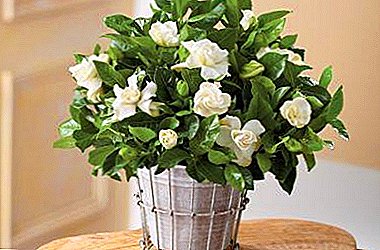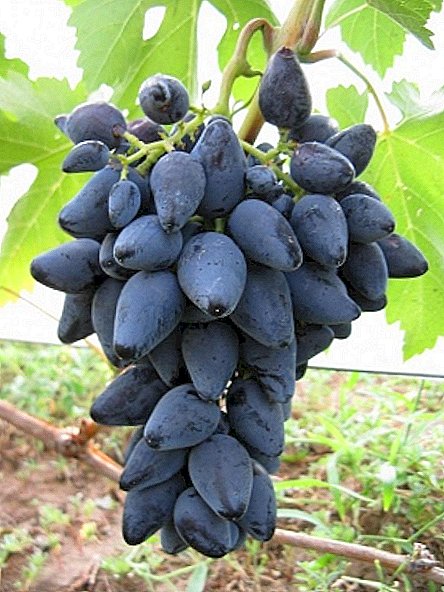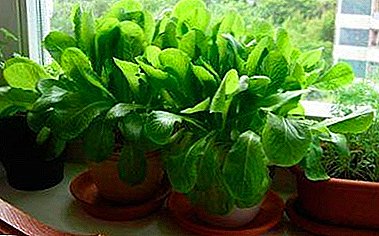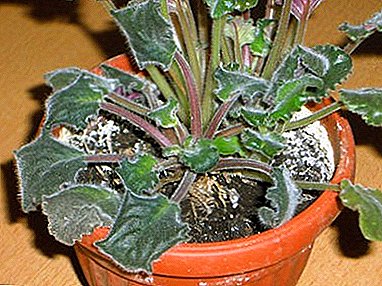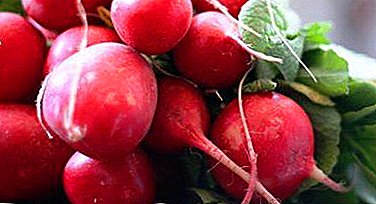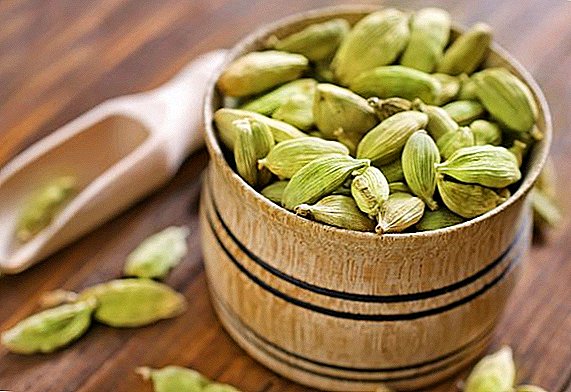 Among the huge variety of spices imported from all parts of our planet, one of the most common is cardamom. This is the oldest eastern spice with a millennial tradition. Cardamom is still popular in many countries of the world and is used by man in cooking, medicine and cosmetology. About what are the types of cardamom, as well as the beneficial properties and contraindications to the use of this wonderful spice will be discussed in this article.
Among the huge variety of spices imported from all parts of our planet, one of the most common is cardamom. This is the oldest eastern spice with a millennial tradition. Cardamom is still popular in many countries of the world and is used by man in cooking, medicine and cosmetology. About what are the types of cardamom, as well as the beneficial properties and contraindications to the use of this wonderful spice will be discussed in this article.
Cardamom and its types
 Cardamom is a close relative of ginger, turmeric, kalgan and guinea pepper. Spice comes from the Cardamom hills of southwestern India. It is especially popular in Asian cuisine. This plant is grown in various countries of Southeast Asia (Cambodia, Vietnam, Sri Lanka), as well as in South America (Guatemala). Whole pods, seeds or cardamom powder can be added to the dishes. However, cardamom is not always used as a pure seasoning, it is added to the spice mix.
Cardamom is a close relative of ginger, turmeric, kalgan and guinea pepper. Spice comes from the Cardamom hills of southwestern India. It is especially popular in Asian cuisine. This plant is grown in various countries of Southeast Asia (Cambodia, Vietnam, Sri Lanka), as well as in South America (Guatemala). Whole pods, seeds or cardamom powder can be added to the dishes. However, cardamom is not always used as a pure seasoning, it is added to the spice mix.
Did you know? Along with saffron and vanilla, cardamom is among the most expensive and valuable spices in the world, which is why it is called the "queen of spices" or the "queen of spices". Cardamom deserved such high status due to its rich aroma and healing properties.
The most common types are green and black cardamom. Both species belong to the ginger family. Each type has its pronounced flavor.
Green cardamom widespread in tropical forests of Southeast Asia. The fruits are thick green pods. It is this variety that has high value and quality. Green cardamom has a rich sweet and spicy taste and a very pleasant strong aroma. Green cardamom can be called an aromatic spice - it smells like mint by its smell. Only a small amount of this spice gives a special taste to the dish. Cardamom is used in the preparation of sweets, pastries; it is added to tea or coffee.
 Black cardamom It is found mainly in Asia and Australia and is widely used in Indian cuisine. This variety is characterized by dark brown pods that are larger than green cardamom. They look like tiny fibrous coconuts. Unlike green, black cardamom has a more tart and bitter taste. That is why it is rarely used to make desserts.
Black cardamom It is found mainly in Asia and Australia and is widely used in Indian cuisine. This variety is characterized by dark brown pods that are larger than green cardamom. They look like tiny fibrous coconuts. Unlike green, black cardamom has a more tart and bitter taste. That is why it is rarely used to make desserts.
Instead, spice is used in savory (meat) dishes. Dark brown seeds are known for their medicinal value, in particular, due to the presence of carbohydrates, proteins, phosphorus, calcium and iron. Although the flavors of black and green cardamom are very different, black cardamom is often used as a substitute for green cardamom, as it is much cheaper.
Did you know? The processes of growing and harvesting cardamom are extremely time consuming. This is partly due to the overpriced value of this spice. The plant is grown at an altitude of 500-2000 meters above sea level. In order to get a harvest, the temperature should not fall below 23-25 WITH. In addition, cardamom should be protected from direct sunlight. The first harvest can be obtained only after 3 years. The pods are individually picked by hand.
Useful composition of cardamom
 Cardamom has many beneficial and healing properties. Cardamom seeds are rich in important chemical elements and organic substances: calcium (383 mg), magnesium (229 mg), iron (13.97 mg), zinc (7.47 mg), sodium (18 mg), potassium (1119 mg), phosphorus (178 mg), manganese (28 mg). Cardamom contains vitamins B1, B2, B3, A. The nutritional value of cardamom: carbohydrates (52.5%), proteins (19%), fats (23%). The energy value of cardamom per 100 g is 311 Kcal. The content of essential oil in the seeds of cardamom can reach up to 8%, but largely depends on the storage conditions. The main chemical compound found in the cardamom essential oil is cineole. The aroma of cardamom is due to the combination of this compound with other components.
Cardamom has many beneficial and healing properties. Cardamom seeds are rich in important chemical elements and organic substances: calcium (383 mg), magnesium (229 mg), iron (13.97 mg), zinc (7.47 mg), sodium (18 mg), potassium (1119 mg), phosphorus (178 mg), manganese (28 mg). Cardamom contains vitamins B1, B2, B3, A. The nutritional value of cardamom: carbohydrates (52.5%), proteins (19%), fats (23%). The energy value of cardamom per 100 g is 311 Kcal. The content of essential oil in the seeds of cardamom can reach up to 8%, but largely depends on the storage conditions. The main chemical compound found in the cardamom essential oil is cineole. The aroma of cardamom is due to the combination of this compound with other components.
The essential oil in the seeds of cardamom contains the following components:
- Cineole (up to 70%);
- a-terpineol (45%);
- a-terpineol acetate (30%);
- myrcene (27%);
- b-pinene (16%);
- limonene (from 8 to 14%);
- menthone (6%);
- b-fellandren (3%);
- Sabinen (2%);
- heptane (2%).
In addition, there are: borneol, a-pinene, gumulene, y-terpinene, p-cumene, linalool, linalyl acetate, terpinen, citronellol, nerol, geraniol, eugenol methyl and trans-nerolidol.
What is the benefit of cardamom for the human body, the use of cardamom
In addition to taste, cardamom has a positive effect on our health. Cardamom seeds contain essential oil, which is widely used in traditional medicine. Cardamom seed compositions are also used in traditional medicine as tonic and stimulants. In addition, cardamom has antiseptic properties and is used as an anti-inflammatory agent.
Cardamom use: relieve fatigue and increase body tone
 Cardamom essential oil and its healing properties have only recently been under the scrutiny of scientists. However, in Asian culture, cardamom has been actively used for many centuries as a reliable remedy for depression and fatigue. Currently, the healing properties of cardamom are proven: it produces an amazing effect on the body. A cup of tea with a small amount of green cardamom helps to cheer up, gives energy. Practicing Ayurvedic doctors are convinced that tea with cardamom is an excellent way to deal with depressive conditions. It contains a natural ingredient that tends to detoxify the body, which generally helps in the fight against depression. In addition, many vitamins and essential oils present in cardamom act as antioxidants, which helps in resisting cell aging. Antioxidants protect our body from stress, and also help in the fight against malaise. Cardamom cosmetics are known as aromatherapy products.
Cardamom essential oil and its healing properties have only recently been under the scrutiny of scientists. However, in Asian culture, cardamom has been actively used for many centuries as a reliable remedy for depression and fatigue. Currently, the healing properties of cardamom are proven: it produces an amazing effect on the body. A cup of tea with a small amount of green cardamom helps to cheer up, gives energy. Practicing Ayurvedic doctors are convinced that tea with cardamom is an excellent way to deal with depressive conditions. It contains a natural ingredient that tends to detoxify the body, which generally helps in the fight against depression. In addition, many vitamins and essential oils present in cardamom act as antioxidants, which helps in resisting cell aging. Antioxidants protect our body from stress, and also help in the fight against malaise. Cardamom cosmetics are known as aromatherapy products.  Cardamom essential oil can be added to the bath. Such procedures help relieve tension and fatigue accumulated during a hard day. For the same purpose, cardamom seeds can be added to tea and other beverages. The warm and pleasant smell of cardamom essential oil has a great therapeutic effect. This magic spice is also very useful for children and teenagers. It contributes to the active work of the brain, increases the tone of the body, which is very important in the learning process. In addition, cardamom can have a cooling effect in extreme heat.
Cardamom essential oil can be added to the bath. Such procedures help relieve tension and fatigue accumulated during a hard day. For the same purpose, cardamom seeds can be added to tea and other beverages. The warm and pleasant smell of cardamom essential oil has a great therapeutic effect. This magic spice is also very useful for children and teenagers. It contributes to the active work of the brain, increases the tone of the body, which is very important in the learning process. In addition, cardamom can have a cooling effect in extreme heat.
Medicinal properties of cardamom
Next, we consider cardamom in terms of its medicinal properties and contraindications.
- Relieves digestive problems. Cardamom has a particularly beneficial effect on the gastrointestinal tract. Fragrant seeds perfectly stimulate the work of the stomach, strengthen its walls. Cardamom seeds are the best folk remedy for stomach disorders, with flatulence (painful bloating), belching and heartburn. Cardamom helps to improve the process of digesting food, improves appetite. Add some ground cardamom to your dishes to improve your appetite.
- Hiccups Spice provides protection against involuntary muscle spasms, such as gastrointestinal spasms of the stomach. Cardamom has antispasmodic properties, its use helps to get rid of hiccups.
- Oral hygiene. In India, green cardamom is widely used to treat infections of the oral cavity. Cardamom is also used as a breath freshener. It is believed that several seeds of cardamom can solve the problems with bad breath.
- Detoxification. Cardamom is often used to detoxify the body. As mentioned above, this spice is rich in such useful minerals and vitamins as vitamins A, B, C, niacin, riboflavin, etc. These components perfectly clean the blood and remove excess fluid, calcium and other toxins from the kidneys. Cardamom is often taken in the postpartum period.
- Cold and flu. Cardamom is an excellent medicine for colds and flu; helps in preventing and alleviating the symptoms of these diseases. Just make yourself a tea of cardamom, regularly use this healing drink, and the headache and tremor will disappear.

- Fight against pathogens. People who are prone to various infections are also encouraged to eat cardamom. Due to the medicinal properties of this spice, it will be a good prevention of infections. Various essential oils contained in cardamom inhibit the growth of bacteria, viruses and fungi.
- Asthma. Cardamom is considered highly beneficial for asthma patients. It also acts as a folk remedy for whooping cough and bronchitis.
- Hypertension. People suffering from hypertension, it is desirable to use cardamom on a regular basis. This spice has the ability to improve blood circulation, which, in turn, helps in the overall reduction of blood pressure.
Using cardamom for weight loss
 Cardamom is considered the most famous spice, which helps to effectively combat excess weight. Many women use cardamom as a means to lose weight. Cardamom in this case is a product that stimulates the process of metabolism, which contributes to the removal of toxins from the body. This exotic oriental spice is known for its warming, spicy, burning taste. For hundreds of years, it has been used by Indians to treat obesity. Cardamom can be used to make various medicinal drinks. Green tea with cardamom is the European version of tea for weight loss.
Cardamom is considered the most famous spice, which helps to effectively combat excess weight. Many women use cardamom as a means to lose weight. Cardamom in this case is a product that stimulates the process of metabolism, which contributes to the removal of toxins from the body. This exotic oriental spice is known for its warming, spicy, burning taste. For hundreds of years, it has been used by Indians to treat obesity. Cardamom can be used to make various medicinal drinks. Green tea with cardamom is the European version of tea for weight loss.
To make this drink, brew one tablespoon of high-quality green tea and half a teaspoon of cardamom seeds in a small thermos. The drink should brew for one night. In the morning, dilute the tincture with warm water. Consume necessarily need with liquid honey. It is necessary to drink at least two to four cups of this drink per day, half an hour before meals. It is strictly forbidden to drink this drink during meals.
The use of cardamom in cosmetology

Cardamom is often added to skin care products for antiseptic and anti-inflammatory purposes. Due to its therapeutic effect, cardamom soothes and improves skin condition.
Application:
- Improves complexion. One of the benefits of cardamom is its ability to brighten the skin. Cardamom essential oil helps in removing blemishes, giving the skin a healthy look. In addition, cardamom contains vitamin C, which is a powerful antioxidant. It improves blood circulation throughout the body, thereby improving skin color and giving the skin a glow and freshness.
- Lip care. Cardamom essential oil has moisturizing properties. Therefore, it is often added to lip cosmetic products (for example, lip balms).
- It gives flavor. Due to its pleasant spicy aroma, cardamom oil is used in the manufacture of perfumes, soaps, shower gels, powders and other cosmetics. Essential oil contained in the seeds of cardamom, has a stimulating effect and is used in the manufacture of perfumes.
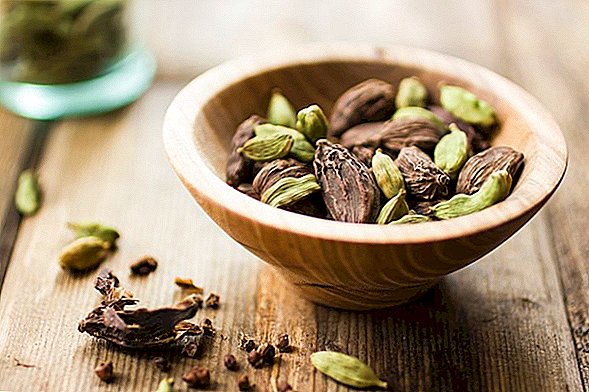
- Great masking agent. The strong aroma of cardamom can dispel unpleasant odors. This makes it an excellent addition to cosmetic products that smell unattractive due to the inclusion of certain ingredients. Cardamom is added to these products to mask the unpleasant smell.
- Skin allergy treatment. Black cardamom has beneficial antibacterial properties. It can be used as an antiseptic to treat skin allergies.
- Healthy hair and scalp. Black cardamom has antioxidant properties that nourish the scalp. In addition, it has antibacterial properties that protect the scalp from infections and irritations. Cardamom helps in strengthening the roots and gives shine to hair.
How to use cardamom in cooking
Cardamom is widely used throughout the world in the preparation of many sweet and savory dishes. Spice is available in pods, in the form of grains (seeds), and also in a ground form (powder).
Important! If you want to fully enjoy the aroma of cardamom, it is preferable to buy whole pods in small quantities, and remove the seeds from them immediately before use. Otherwise, they quickly lose their flavor and taste. Closed cardamom pods, by contrast, have a good shelf life and are able to maintain the aroma of seeds for up to one year.
 Grind the grains with a mortar before use. If you use cardamom to flavor stews or other hot dishes, slightly crush the whole pod and add to the dish. Once the dish is ready, remove the used pod. Cardamom can be added to tea, coffee, liquor and other beverages to give a pleasant and refreshing flavor. You can add cardamom powder to ground coffee before cooking.
Grind the grains with a mortar before use. If you use cardamom to flavor stews or other hot dishes, slightly crush the whole pod and add to the dish. Once the dish is ready, remove the used pod. Cardamom can be added to tea, coffee, liquor and other beverages to give a pleasant and refreshing flavor. You can add cardamom powder to ground coffee before cooking.
In addition, cardamom powder can be used to flavor bread, cakes, pastries, cookies, desserts. And finally, cardamom is added to savory dishes: soups, stews, mashed potatoes, cereals, pies, rice dishes. Cardamom gives spice to meat dishes; often used in marinating meat for kebabs. Cardamom is also added to pickles and marinade for herring.
The use of cardamom in different national cuisines:
- In Asia Cardamom is used to flavor various hot and sweet dishes. Green cardamom is widely used in Indian cuisine and is one of the main components of the garam masala (a mixture of spices). Cardamom is also an important ingredient in the preparation of curry powder. This spice is often added to Indian sweets and drinks (tea, coffee, tinctures). In Northern India, cardamom is widely used in rice dishes. In Sri Lanka, cardamom pods are added to spicy dishes of beef or chicken (curry chicken).
- Cardamom, due to its amazing taste characteristics and properties, has gained widespread use throughout Arab world. In these countries, cardamom is one of the most popular spices. Coffee with cardamom is a symbol of hospitality and prestige. A small amount of cardamom gives the coffee a tempting aroma. In the Middle Eastern cuisine, green cardamom is used as a spice for sweets or as a traditional supplement to tea or coffee.
- Cardamom is widely used as a flavoring agent in cooking known Turkish coffee.
- In addition to salty dishes, the spice is used in various desserts and sweets. Cardamom is present in country kitchens Northern Europe. In the Scandinavian countries, it is used in flavoring all kinds of sweet pastries and bread instead of cinnamon (Danish pastries, Finnish sweet bread, Swedish yeast bread).
Can cardamom harm the body?

Contraindication to the use of cardamom in any form is hypersensitivity to this spice. You must be very careful about the dosage of cardamom. The pronounced taste and aroma of this spice can cause serious allergic reactions.
Important! Cardamom seeds and oil are strictly forbidden to be used by people with such diseases as a stomach ulcer or gastritis. This is due to the fact that cardamom stimulates all digestive functions and may worsen your condition.
People with inflammatory bowel disease, gallstones and colic should also avoid eating this spice. In addition, the spice cardamom has properties that stimulate menstruation. Therefore, cardamom is not recommended for women suffering from endometriosis. For the same reason, it is not recommended for women during pregnancy and lactation. Essential oil and cardamom seeds should not be given to children under the age of 6 years.
 Cardamom - one of the oldest condiments known to man. Today, this exotic spice is an important component in cooking throughout the world. Cardamom is used in making tea, coffee, many desserts and other delicious dishes. Cardamom has a rich tempting spicy-sweet taste and a unique mysterious aroma that will not leave anyone indifferent.
Cardamom - one of the oldest condiments known to man. Today, this exotic spice is an important component in cooking throughout the world. Cardamom is used in making tea, coffee, many desserts and other delicious dishes. Cardamom has a rich tempting spicy-sweet taste and a unique mysterious aroma that will not leave anyone indifferent.




